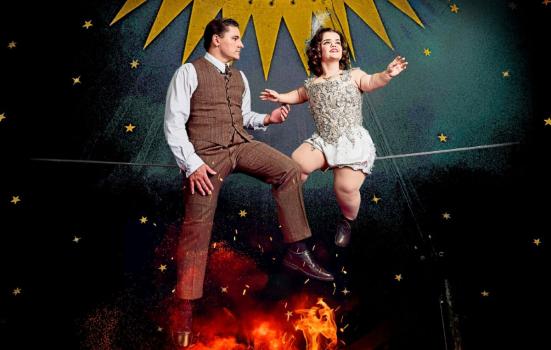In the world of public relations and, more importantly, in the world of activism and advocacy, language is critical. Binita Walia explores why.

Paul Blakemore with design by Studio Stiles
You may be old enough to remember the TV show Mind Your Language, now considered sexist, stereotyping and racist. It was eventually cancelled with Michael Grade, Director General of London Weekend Television which produced it, saying it should never have been broadcast.
Language has been on my mind a great deal, especially in the light of the way mainstream media referred to the new ‘Asian’ Prime Minister.
I’ve worked with many innovative arts companies that challenge pre-existing norms to broaden the cultural landscape. They include Oily Cart innovating in sensory theatre, Extraordinary Bodies making work fully accessible both on and off the stage, and Contact Manchester enabling young people to take the lead in everything that happens in and out of their building.
The power of language for inclusivity and change
As a public relations professional, I am both an activist and advocate. I consider, acknowledge and harness the power of my work for change where I can. And many of my clients lead in societal change through the arts too.
Working towards my clients’ goals, the premise for much of what I do is to ask: in this majority white, cis-gendered, non-disabled, non-neurodiverse cultural landscape, is it possible that the way we tell stories can shift hearts and minds and engender inclusivity?
Recently I was speaking on Communicating Diversity for CVAN’s Fair and Equitable programme. I had to interrogate my practice as an arts PR, and the way the press presents stories in general, analysing if it is possible to affect change through language.
As a British Indian reading the ways journalists have referred to Rishi Sunak, I cite this as a prime example of the need for more thought and consideration when describing people. These are some of the descriptions I found:
Asian
brown
person of colour
Person of Colour
South Asian
British Indian
non-white
ethnic person
Hindu British
PM of colour
of Indian origin
British Asian
How can they all mean the same thing? What the use of this kind of language does – consciously or unconsciously - is called ‘othering’, in effect saying “you are not one of us, you are different, and you are wrong”.
‘Person of colour’ means anyone who is not white, thereby polarising and creating two states of ‘white’ and ‘other’. I question how far this is from using the racist term ‘coloured’. There are other ways to identify that Mr Sunak is different: one new term which might be better employed and which turns ‘them and us’ on its head is ‘global majority’.
The power of words for advocacy and activism
What you don’t say can be as powerful as what you do. Working on the announcement of Keisha Thompson as the new lead for Contact Manchester, I suggested we avoid the ‘first Black woman’ - a too-obvious trope that sets its own agenda. Instead, we focused on other firsts: the first poet, the first Mancunian and the youngest.
Media outlets selected the joyous, smiling images of Keisha with combinations from our key messaging. Just one publication led with the trope alongside a more serious image. What I hope we did is help to normalise a young Black woman running a building, while celebrating many ‘firsts’, at the same time fulfilling the media’s preferred headlines.
Changing language
The diversity advocacy organisation Inc Arts set a great example in challenging the homogenisation of all non-white people into one acronym BAME, with their BAME Over campaign, delivering long-lasting change. Showing allyship through using preferred pronouns is also a simple yet magnanimous step towards inclusivity.
The lexicon of racist metaphors in the tech sphere is shocking: ‘blacklist’ for malicious websites and emails, and ‘whitelist’ for safe could be changed to Exclude/Include or Deny/Allow. ‘Black Hat’ for malicious hackers and ‘White Hat’ for good developers could shift to Ethical/Unethical. Master for a main machine and Slave for controlled machines can be substituted with Leader/Follower, Active/Standby, or Primary/Secondary depending on the context.
Likewise, terms like ‘girl boss’ or ‘female entrepreneur’ must be challenged. We never hear ‘boy boss’ or ‘male entrepreneur’. The status of women leaders is diminished by the use of these terms as a novelty. How society is shaped by language and keeps people in their place can only be changed when we notice and challenge these norms.
Self-censorship?
From being anti-racist to understanding the Social Model of Disability, considering the everyday use and impact of the language we use enables change. Always saying the right thing in the right way is difficult, but we need to take responsibility for undoing learnt and conditioned behaviours.
I only need to ask my 18-year-old to find out how much I get ‘wrong’. Having an intelligent teenager calling you out on your conditioning is a useful verbal slap. Asking for advice and support about current practice is super useful.
Self-identifying
Something I do for my clients is to request edits in published articles and reviews. It’s not usual practice but it’s important to activism. In one case, a writer did some research on a performer’s disability to mention it in a review. That performer's website (and our communications) specifically did NOT mention it, in line with the Social Model of Disability.
When I requested its removal, it was amended immediately; people do know when they have crossed lines. But why does it always fall to the artist or their colleagues to take action?
Last year I developed specially-crafted access statements for clients’ press releases to manage challenging expectations of some media outlets: one example being that they may have to pay for BSL translation.
What do arts organisations need to consider?
As an example, I am currently working on the communications for a show from Extraordinary Bodies set in 1933 Germany. Even though the show is not about the Holocaust directly, the challenge we have is to acknowledge and story tell with sensitivity, empathy and nuance. Even with immense care and thought, at times we were told our words were unsuitable so we went back and forth towards resolution, balancing marketing and deference.
The learning would not be possible without submission to the knowledge and experience of specialist outside advisors supporting the project. We had to be bold in the writing of the communications, to clarify our position and the context. So new words were crafted with deep care and we have ensured any learning permeates through to all areas of the work and team.
Organisations must consider the impact not just of their work itself, but of the way they talk about it in a changing world. The way we talk about many subjects - from weight and bodies to disability and race - is evolving. My responsibility is to stay ahead of the curve, or at least ride the wave, so that I can advise, recommend and employ best practice for my clients.
Of course, there is much more to say about communicating diversity, I have just touched the surface. But each new challenge and client is a chance to learn. When it gets tough, I frame it as a privilege and an opportunity to be able to grow skills and understanding. The language revolution is here. With it, we can all embrace conscientious activism towards inclusivity and anti-discrimination.
Binita Walia is a freelance PR in the arts and culture sector.
![]() thespaceinbetween.co.uk
thespaceinbetween.co.uk
![]() @TSpaceInBetween
@TSpaceInBetween
 binita-walia-737b7919/
binita-walia-737b7919/




